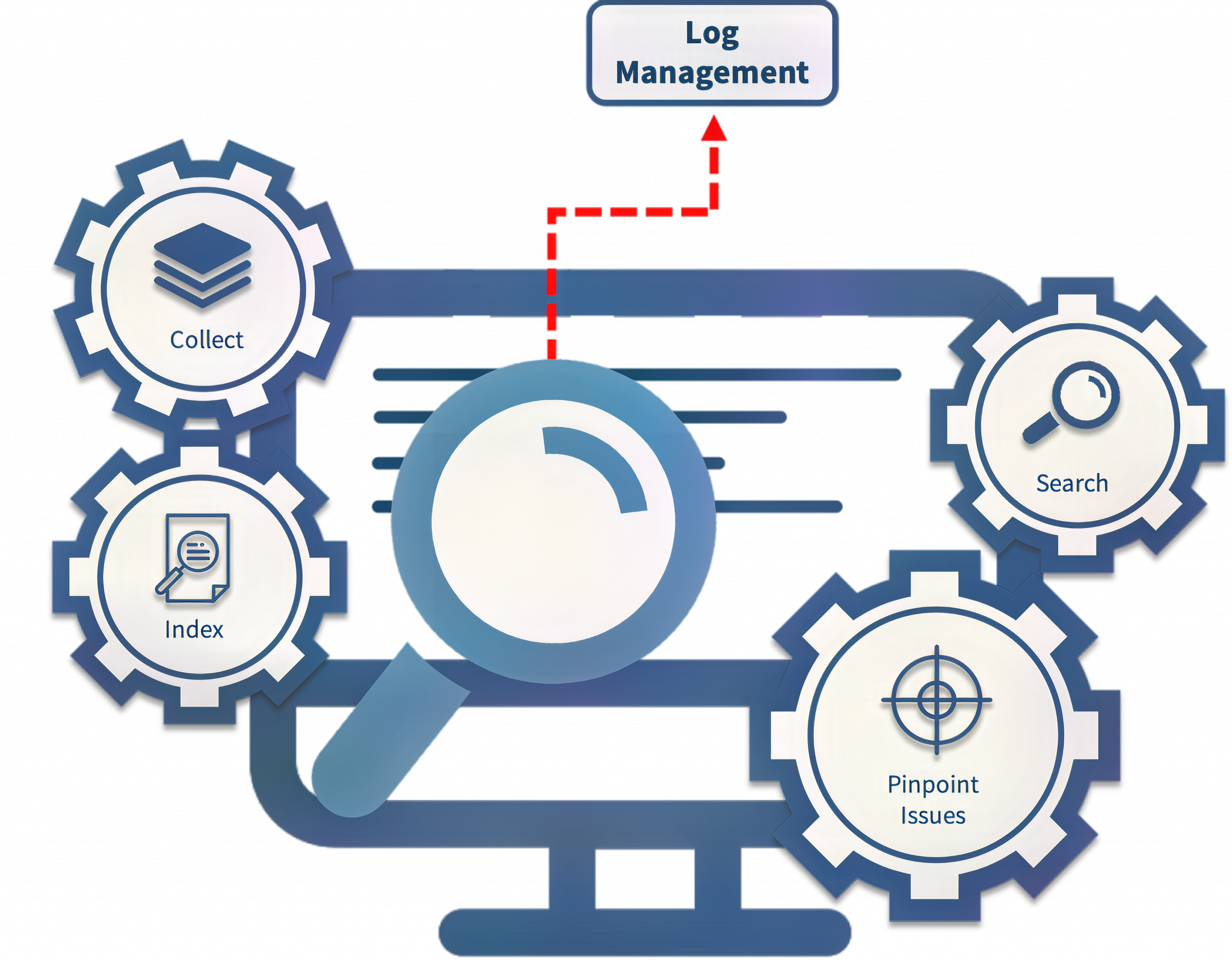Content
Here you can see content of course overview
Loginng and Monitoring
What is syslog?
Syslog is a standard network-based logging protocol that works on an extremely wide variety of different types of devices and applications, allowing them to send free text-formatted log messages to a central server
Syslog documentation

Kiwi syslog server
Syslog servers are used to collect syslog messages in a single location. Download link
-
 Centrally manage syslog messages and SNMP traps
Centrally manage syslog messages and SNMP trapsManage syslog messages and SNMP traps from network devices, Linux, UNIX and Windows systems from single console
-
 Recive real-time alerts based on syslog messages
Recive real-time alerts based on syslog messagesCreate intelligent alerts based on syslog messages content, message volume, metadate and custom conditions
-
 Automatically respond to syslog messages
Automatically respond to syslog messagesTrigger email alerts, run scripts, log to file or ODBC database, forward messages and more.
-
 Store and archive logs for regulatory compliance
Store and archive logs for regulatory complianceSchedule automated log archival and clean-up to help you comly with SOX, PCI, DSS etc.
-
 Schedul the generation of syslog reports via email
Schedul the generation of syslog reports via emailView graphs of syslog statistics over specific time periods
-
 Monitor and manage logs from web console
Monitor and manage logs from web consoleFilter and monitor log messages on intuitive web console with multiple custom views.
Cisco devices
Cisco system Inc. is the worldwide leader in networking for the Internet.
Cisco delivers a comprehensive portfolio of devices for Enterprise Networks, data centers, and smaller businesses. These solutions are optimized for a wide range of industries, including service providers, financial services, and the public sector.

Security
Cybersecurity , port security , portfolios, banners and configure SSH.
-
Setup secret password
Setup secret password for each layer of each device of the network
-
Disable Services
Cisco allows you to disable those services that are vulnerable to a hacker attack
-
Disable CDP
Also cisco allows to disable CDP? which allows the detection of Cisco network equipment, its name, IOS version and IP address connected
-
Setup SSH
Setup secure shell protocol - cryptographic network protocol for operation network services securely over an unsecured network
-
Banners
Setup banner with receive messages if a user connects to the network
Hacking
Wireshark is the world’s foremost and widely-used network protocol analyzer.
Kali Linux is an open-source, Debian-based Linux distribution aimed at advanced Penetration Testing and Security Auditing.
Access Control Lists
ACLs contains metadata that specifies who is allowed to view and modify a document. Each item in a repository has an associated ACL that is updated whenever a user changes the permissions applied to the item.
Network address translation
What is NAT?
Network address translation (NAT) is designed for IP address conservation. It enables private IP networks that use unregistered IP addresses to connect to the Internet. NAT operates on a router, usually connecting two networks together, and translates the private (not globally unique) addresses in the internal network into legal addresses, before packets are forwarded to another network.
Private addresses:
1. 10.0.0.0/8
2. 172.16.0.0/12
3. 192.168.0.0/16
Quality of service
Quality of Service (QoS) is a set of technologies that work on a network to guarantee its ability to dependably run high-priority applications and traffic under limited network capacity. QoS technologies accomplish this by providing differentiated handling and capacity allocation to specific flows in network traffic. This enables the network administrator to assign the order in which packets are handled, and the amount of bandwidth afforded to that application or traffic flow
Open shortest path first
The Open Shortest Path First (OSPF) protocol, defined in RFC 2328, is an Interior Gateway Protocol used to distribute routing information within a single Autonomous System. This paper examines how OSPF works and how it can be used to design and build large and complicated networks.
IPv6
-
380 × 1036 addresses
IPv6 uses 128-bit addresses as opposed to the 32-bit addresses used by IPv4, allowing for a substantially larger number of possible addresses.
-
More efficient routing
IPv6 has a more efficient routing, which allows the whole queue to avoid package fragmentation
-
Quality of Service
Built-in Quality of Service (QoS) technology that defines delay sensitive packages
-
No NAT
Removing NAT allowed the address space to be extended from 32 bits to 128 bits
-
IPsec
IPv6 has IPsecurity support (IPsec application optional)
-
Improved header
IPv6 has improved header structure which reducing procession costs
Virtual private network
What is VPN?
A VPN or Virtual private network is a tecnology which gives you online privacy and anonymity by creating a private network from a public internet connection. VPNs mask your internet protocol (IP) address so your online actions are virtually untraceable. Most important, VPN services establish secure and encrypted connections to provide greater privacy than even a secured Wi-Fi hotspot.
Wi-Fi
Wi-Fi is a wireless technology used to connect computers, tablets, smartphones and other devices to the internet.
REST APIs
Main criteria:
-
Client-Server
The system should be split into clients and servers.
-
Stateless
The server should not store any client information.
-
Cache
Each answer must be noted whether it is cached or not.
-
Uniform Interface
Single interface defines the interface between clients and servers.
Main principles:
Network Automation
Network automation is the process of automating the configuring, managing, testing, deploying, and operating of physical and virtual devices within a network.